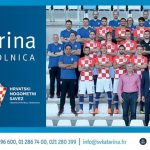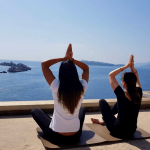March 30, 2019 – More international medical tourism expert training in Zagreb as Irving Stackpole and Elizabeth Ziemba conduct a stimulating workshop of how to develop a health cluster. A workshop with some notable absentees.
Of all the aspects of life in Croatia that I am following as part of my job, none fascinates me more than the medical tourism sector.
As I have written previously, it is not an area I knew much about until 18 months ago before Bagatin Clinic CEO Ognjen Bagatin asked for a meeting and showed me what he and the industry were doing and what they were capable of. As my article, Health Tourism is Coming Home: Why Zagreb is the Next Big Medical Tourism Destination, showed, I was more than a little impressed.
And it was not just me that was thankful to Bagatin for my introduction to this untapped jewel of Croatian jewel and the Croatian economy. Over the last 18 months, I have met and interviewed numerous international experts, including the editor of International Medical Travel Journal, CEO of Malaysia Health Travel Council and the International Patient Experience Director of Cleveland Clinic. The majority owe their first contact to health tourism in Croatia to the efforts of Bagatin or mention his efforts very early on when talking about the industry in Croatia.
Ognjen Bagatin is currently in Cleveland, taking part in the Association of Croatian American Professionals medical tourism taskforce conference, but before he went, he organised yet one more specialised workshop for key stakeholders at the Bagatin Education Center in Zagreb, inviting medical tourism experts Irving Stackpole and Elizabeth Ziemba to run an intensive one-day seminar on how to develop a health tourism cluster.
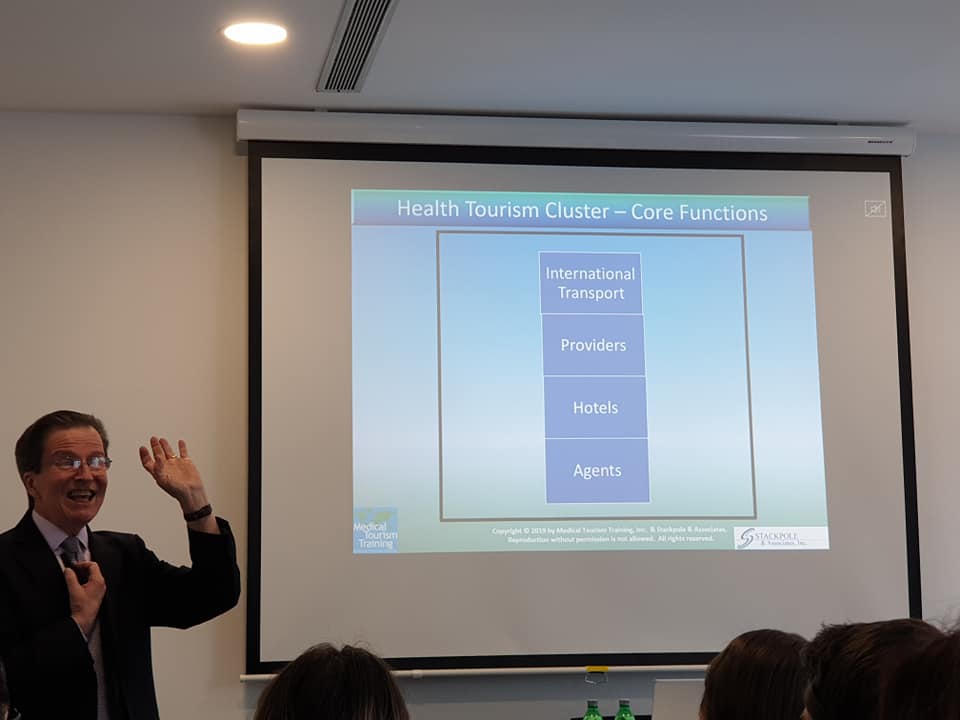
Both the timing and the topic of the seminar came at a poignant moment in the medical tourism story. After years of private clinics pushing the medical tourism story forward internationally with little or no support, official tourism bodies have started making noises about the importance of medical tourism in recent times. While that interest is both welcome and crucial to the success of Croatia’s success in this potentially lucrative sector (as I wrote previously, international experts agree that Croatia has the ability to be in the world’s top 10 medical tourism destinations within 10 years if its officials can only unite), some of the initial steps have hardly been encouraging.
The Zagreb Tourist Board’s $50,000 health strategy document, which was released earlier this year at a dedicated health conference called Health Spot Croatia, came in for some criticism, mostly due to its very light content and absence of any strategy in its 71 pages. Here is what IMTJ had to say about the strategy document.
And so when two respected international experts with 55 years’ combined experience in the medical tourism sector arrive in Zagreb with a specialised workshop on how Croatia should develop its health tourism cluster, one might expect quite some interest from the bodies driving the new Health Spot Croatia initiative – namely the Croatian National Tourist Board, the Zagreb Tourist Board, the Ministry of Health, the Ministry of Tourism and the Croatian Chamber of Economy.
Despite the $50,000 spent on a report which said very little, there was no Zagreb Tourist Board presence.
Nobody from the Ministry of Health.
Nobody from the Croatian Chamber of Economy
Nobody from the Ministry of Tourism.
The Croatian National Tourist Board was represented, the only stakeholder of five that had come to learn from experts in this critical sector for the development of Croatian tourism… and its economy.
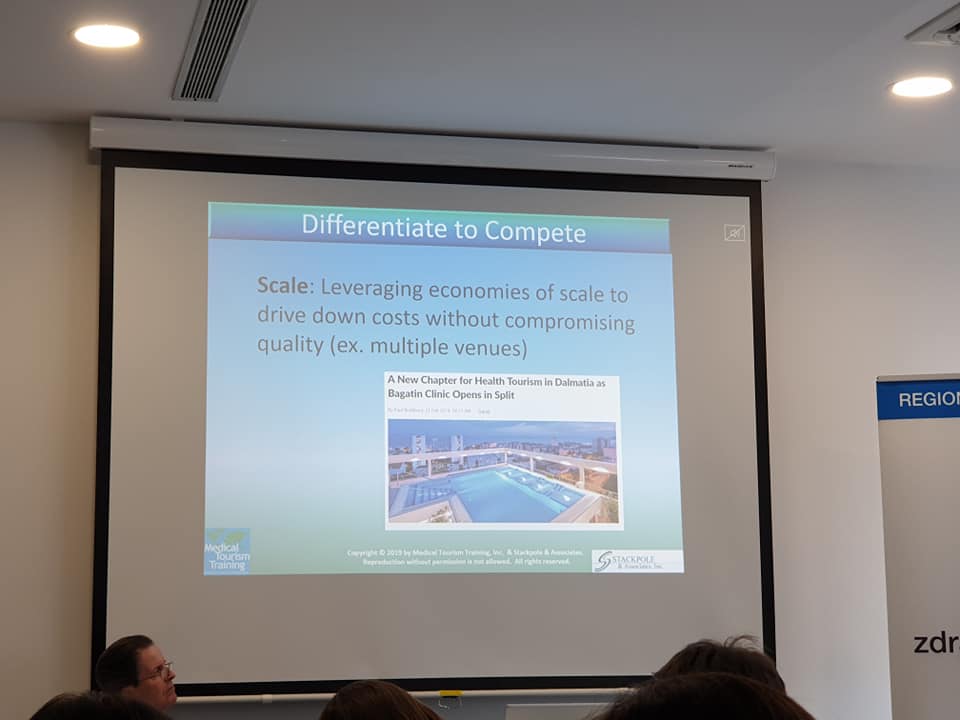
(Nice to see TCN included in the presentation material – the opening of Bagatin Clinic in Split as an example of leveraging economies of scale)
Their absence was all the more lamentable as the workshop was EXACTLY what Croatia’s health tourism stakeholders need at this time to polish their rough diamond and make it shine as one of the best in the world.
Having observed Croatian tourism for several years, I don’t think I am betraying too many secrets when I state that tourism for the most part just happens in Croatia. When you have a coastline and over a thousand islands with the crystal clear Adriatic and azure skies above, selling sun and sea tourism does not require much effort. That easy win has transferred itself into other sectors of tourism with a mentality of ‘the tourists will come anyway’ all-too-pervasive in the approach to tourism in general.
Irving Stackpole and Elizabeth Ziemba, a husband and wife team, whose expertise and chemistry made them ideal co-presenters, offered something which was eagerly accepted by those who did attend – a road map of how to develop the building blocks of health tourism in Croatia, using solid methodology and examples, and by inviting participants to do their own thinking in the Croatian scenario.
What I liked about the workshop particularly was how Stackpole and Ziemba showed what a health cluster was NOT, before then building up a picture of what it could be. It was the kind of systematic analysis and approach to a tourism sector that Croatia could benefit from in general, not just for its health tourism. Stackpole went into great detail about what a health cluster should be, for example. The core elements of Transport, Hotels, Agents and Service Providers, yes, but a cluster is multi-layered. Secondary components of a cluster include local transport, restaurants, activities, attractions and entertainment. For more details of the tertiary layers and beyond, I recommend you sign up for one of his seminars.
Rather than some loose usage of a fashionable term, the Stackpole/Ziemba duo showed concrete examples, both local and international, to illustrate their points, as well as encouraging audience participation to help the thought process along. The best example of a cluster in Croatia was one that nobody would probably have contemplated – Rimac Automobili.
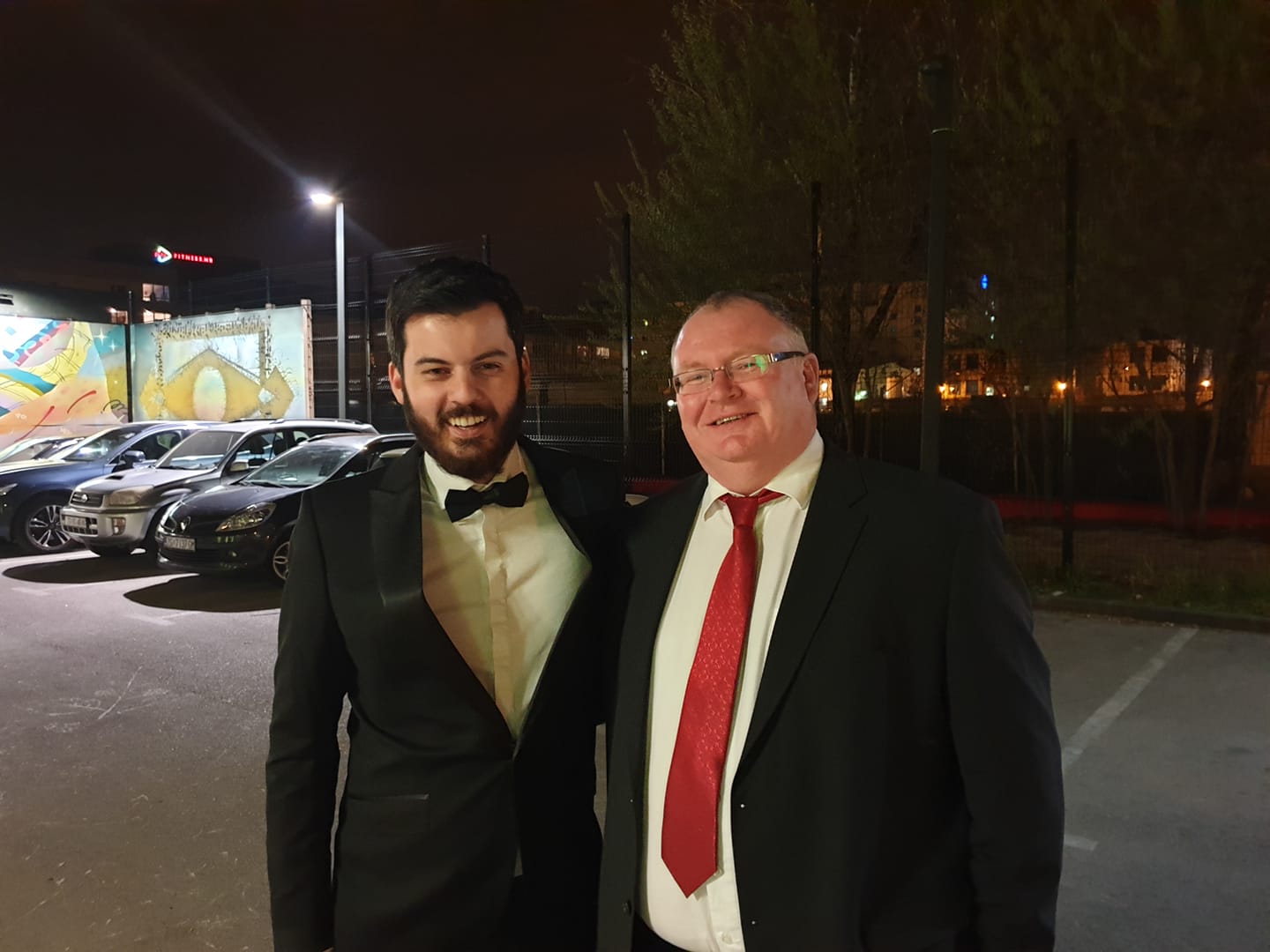
(TCN at the EY Entrepreneur of the Year Awards this week with TCN fan Mate Rimac, CEO of Rimac Automobili, a perfect example of a successful Croatian cluster, according to Irving Stackpole and Elizabeth Ziemba)
Here was a young Croatian entrepreneur, who has built the fasting electric supercar in the world in a country with no car industry, whose battery technology is increasingly used worldwide in the automotive industry. And he has done so with a network of suppliers and personnel around him in his native Croatia – all key cogs in the bigger picture. A truly successful and interconnected cluster in Croatia. Proof that it can work.
The most stimulating part of the seminar for me was the session in which participants broke up into small groups to analyse its competition and what Croatia does better and what is unique about Croatia’s offer. This is an aspect of tourism planning that this country badly needs. It is not enough to say that we have the best food, the best wine, the best of everything. Analysing what makes us unique and what the competition does better than us, that we can learn from and improve, is imperative if Croatia is to succeed with its medical tourism opportunity, which I am convinced it will in time.
I left the seminar with mixed feelings. On the one hand, I was much encouraged by what I had seen and learned. After 18 months following this industry, not only do I see Croatia’s potential, but so too do many international experts. And they also possess the tools, expertise and willingness to help Croatia succeed. The sadness came from the lack of engagement of the official stakeholders, whose support is crucial for Croatia to develop this fabulous opportunity.
I truly hope that the various stakeholders can find a common path. With the Croatian economy in the situation it is, the prize is too valuable to mess with. And the benefits for the country as a whole are tantalising.
To follow the Croatian medical tourism story, check out the dedicated TCN page.


